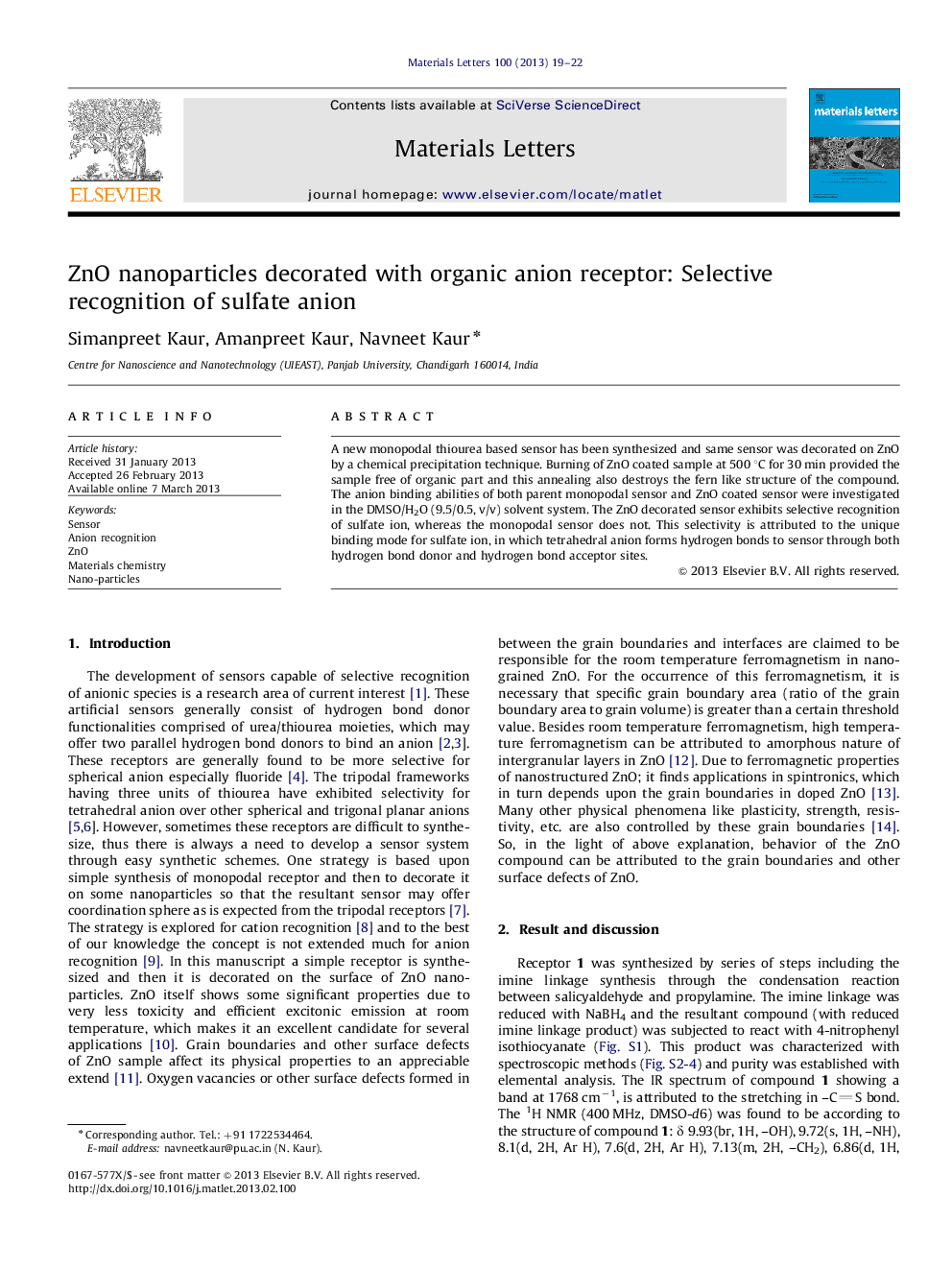| Article ID | Journal | Published Year | Pages | File Type |
|---|---|---|---|---|
| 1645292 | Materials Letters | 2013 | 4 Pages |
A new monopodal thiourea based sensor has been synthesized and same sensor was decorated on ZnO by a chemical precipitation technique. Burning of ZnO coated sample at 500 °C for 30 min provided the sample free of organic part and this annealing also destroys the fern like structure of the compound. The anion binding abilities of both parent monopodal sensor and ZnO coated sensor were investigated in the DMSO/H2O (9.5/0.5, v/v) solvent system. The ZnO decorated sensor exhibits selective recognition of sulfate ion, whereas the monopodal sensor does not. This selectivity is attributed to the unique binding mode for sulfate ion, in which tetrahedral anion forms hydrogen bonds to sensor through both hydrogen bond donor and hydrogen bond acceptor sites.
► The ZnO nanoparticles have been decorated with organic receptors for chemosensor applications. ► The sensor properties are developed for the estimation of sulfate anion. ► The sensor can detect a minimum of 100 nm concentration of sulfate anion in semi-aqueous medium.
